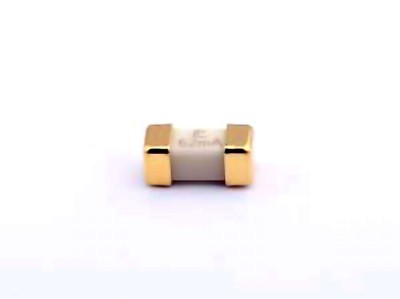
This comprehensive guide delves into common troubleshooting challenges faced with the ISM330DLCTR Sensor , offering effective solutions to ensure optimal performance. Engineers and developers will find practical advice for dealing with calibration, connectivity, data inaccuracies, and more, ensuring smooth integration and application.
Understanding the ISM330DLCTR and Its Common Troubleshooting Challenges
The ISM330DLCTR is a highly versatile 6-axis sensor, capable of measuring both acceleration and angular rate. It's designed for applications in wearables, automotive systems, robotics, and consumer electronics, offering high precision and Power efficiency. However, as with any advanced sensor technology, engineers and developers may encounter a range of common issues during setup, calibration, and integration. This article explores the most frequent challenges associated with the ISM330DLCTR and provides actionable solutions to resolve them, ensuring smooth operations.
1.1 Introduction to the ISM330DLCTR Sensor
The ISM330DLCTR combines a 3-axis accelerometer and a 3-axis gyroscope, designed to measure dynamic acceleration and angular velocity. It communicates through I2C and SPI interface s, which makes it suitable for both embedded systems and IoT applications. It’s known for its small size, low power consumption, and ability to provide high-performance data for motion sensing and gesture recognition.
Despite its advanced capabilities, certain issues can arise during implementation, leading to frustration for developers and engineers. Below, we cover some of the most common troubleshooting areas for the ISM330DLCTR sensor.
1.2 Connectivity Issues: SPI/I2C Communication Failures
Connectivity is often one of the first hurdles engineers encounter when working with sensors like the ISM330DLCTR. The sensor supports both SPI and I2C communication protocols, but misconfigurations or incorrect wiring can lead to communication failures.
Symptoms:
No data received from the sensor.
Inconsistent readings or errors in the sensor data.
Communication timeout errors.
Solutions:
Check Wiring Connections: First, ensure that the sensor is wired correctly. For I2C communication, verify that the SDA (data) and SCL (clock) lines are correctly connected. For SPI, check the MISO, MOSI, SCK, and CS (Chip Select) pins. Also, confirm that the power (Vdd) and ground (GND) connections are solid.
Verify Pull-up Resistors : If using I2C, ensure pull-up resistors are placed on the SDA and SCL lines. These resistors are critical for ensuring proper signal levels and preventing data loss.
Correct Communication Settings: Double-check the configuration settings for your communication protocol. The ISM330DLCTR supports both I2C and SPI, so ensure you’ve set the correct communication mode in your microcontroller or development board.
Address Conflicts (I2C): If using I2C, ensure there are no address conflicts with other devices on the bus. The default I2C address for the ISM330DLCTR is 0x6A or 0x6B, depending on the state of the SA0 pin. If multiple devices are sharing the same address, you may need to change the address of one device to avoid conflicts.
Check Power Supply: Insufficient or unstable power can result in communication failures. Ensure the sensor is receiving the correct voltage (typically 1.8V to 3.6V), and use a stable power source with good decoupling capacitor s to avoid voltage spikes.
1.3 Calibration Problems: Inaccurate Data
One of the key features of the ISM330DLCTR is its high precision, but inaccurate data may occur if the sensor is not calibrated properly. Calibration issues can result in offset errors, drift, or erroneous readings from the accelerometer or gyroscope.
Symptoms:
Accelerometer data shows constant offset (e.g., readings remain non-zero when the device is stationary).
Gyroscope data shows drift or noise.
Incorrect measurement of angles or motion.
Solutions:
Accelerometer Calibration: To calibrate the accelerometer, it’s crucial to ensure the sensor is stationary and placed on a flat surface. The ISM330DLCTR has built-in features for self-calibration of the accelerometer, but you can also perform a manual calibration by adjusting the offsets based on known values (e.g., gravity = 9.81 m/s² along the Z-axis).
Gyroscope Calibration: The gyroscope may exhibit drift over time, leading to inaccurate angular rate readings. To correct this, it’s advisable to implement a software-based calibration algorithm that adjusts the gyroscope's bias. Alternatively, some applications include an automatic calibration feature, which can be activated to correct drift.
Temperature Compensation: Both the accelerometer and gyroscope are sensitive to temperature variations. If you notice fluctuating sensor readings, consider implementing temperature compensation in your application to correct for these variations.
Axis Alignment: Ensure that the sensor is aligned with the intended axes of motion. If the sensor is misaligned, it can cause errors in measurements. Calibrate the sensor to account for any misalignment between the sensor and the system's coordinate axes.
1.4 Sensor Noise and Data Instability
Sensor noise and data instability can be another challenge when working with high-precision motion sensors. Noise can interfere with the sensor's ability to produce accurate and reliable readings, especially when measuring small movements or slow changes in velocity.
Symptoms:
Sudden spikes or irregular data points in sensor output.
Instability in data when the device is stationary.
Poor performance in low-motion environments.
Solutions:
Data Filtering: Implementing a low-pass filter (such as a moving average or a Kalman filter) can help smooth out noise and stabilize the sensor readings. This is particularly useful in applications where you need to measure slow, continuous motion or when dealing with high-frequency noise.
Averaging Multiple Samples: Take multiple readings from the sensor in rapid succession and average them to reduce random fluctuations. This technique is especially helpful when the sensor is in a low-motion or stationary state.
Optimize Sensor Settings: The ISM330DLCTR allows developers to adjust the output data rate (ODR) and bandwidth settings. Increasing the ODR or reducing the bandwidth can help reduce noise, though it may affect power consumption. Fine-tune these parameters based on your specific application requirements.
Check for Mechanical Interference: Mechanical vibrations or electromagnetic interference ( EMI ) from nearby components can cause instability in the sensor data. Make sure the sensor is properly shielded and isolated from such interference sources.
Advanced Troubleshooting Tips and Best Practices for Optimal Performance
In this section, we continue our exploration of the common troubleshooting challenges engineers may face when integrating and utilizing the ISM330DLCTR sensor, along with more advanced solutions to optimize performance in real-world applications.
2.1 Power Management Issues: Ensuring Efficient Operation
The ISM330DLCTR is designed to be power-efficient, making it an ideal choice for battery-operated devices. However, power-related issues can arise, especially if the sensor is not properly managed within the system.
Symptoms:
Rapid battery drain.
Sensor output stops intermittently.
Unexpected sensor resets.
Solutions:
Use Low-Power Modes: The ISM330DLCTR offers several low-power modes to extend battery life. These modes include "Power-down" and "Sleep" states, where the sensor reduces its activity to save power. Be sure to configure the sensor to enter these modes when not in use, especially in battery-powered applications.
Monitor Power Consumption: Implement software to monitor the power consumption of the sensor and adjust the settings dynamically. For example, reduce the output data rate (ODR) or disable the gyroscope when only accelerometer data is needed.
Optimize System Power: The ISM330DLCTR operates on a supply voltage range from 1.8V to 3.6V. Ensure that the power supply is within this range to prevent irregular behavior. Additionally, use decoupling capacitors to smooth out power supply noise that may affect sensor stability.
2.2 Software-Related Issues: Integrating with Firmware
Many issues that arise during the development phase of using the ISM330DLCTR are rooted in software configurations or bugs in the firmware that interacts with the sensor.
Symptoms:
Inconsistent or inaccurate data output.
Firmware crashes or freezes.
Failure to detect sensor on startup.
Solutions:
Check Sensor Initialization: Ensure that the sensor is initialized correctly in the firmware. This includes setting the correct output data rate, selecting the desired operating mode (e.g., normal mode, low-power mode), and configuring any necessary interrupts or communication protocols.
Firmware Updates: Keep the sensor's firmware up to date. Manufacturers may release updates to fix known issues or improve performance. Additionally, review the sensor’s datasheet and application notes regularly to stay informed about new features or recommended practices.
Debugging and Error Handling: Implement robust error handling in your firmware. This includes checking for communication errors, ensuring that the sensor’s registers are correctly read and written, and using timeouts to prevent hangs in case of communication issues.
2.3 Environmental Factors: Reducing External Interference
Environmental factors such as temperature variations, mechanical vibrations, and electromagnetic interference (EMI) can affect the performance of the ISM330DLCTR sensor. Understanding and mitigating these influences is crucial for ensuring reliable operation.
Symptoms:
If you are looking for more information on commonly used Electronic Components Models or about Electronic Components Product Catalog datasheets, compile all purchasing and CAD information into one place.
Partnering with an electronic components supplier sets your team up for success, ensuring the design, production, and procurement processes are quality and error-free.


